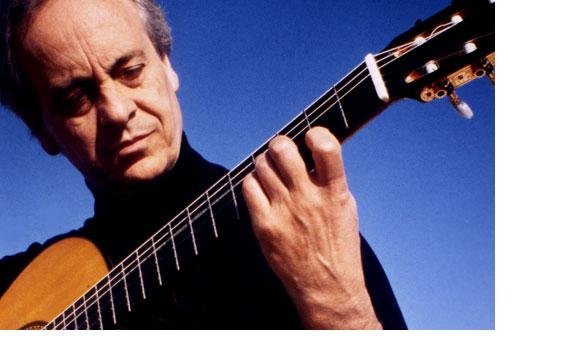Famed flamenco guitarist comes to GMU's Center for the Arts
World famous flamenco guitarist, Paco Peña will be performing at George Mason University’s Center for the Arts on Friday, Feb. 1 at 8 p.m. He is touring with his troupe of dancers, vocalists and musicians who dance traditional flamenco. Peña started playing as a boy at age 12 in Cordoba, Spain, and went on to become a professional musician playing in Madrid and then England, later touring America and Europe.
| (Paco Pena performs on Canadian Public Radio's program "The Q with Jian Ghomeshi".) |
Flamenco is a Spanish dance which originated in Andalusia, located in southern Spain. Although traditionally seen as folk dance and music, it has developed into much more and has come to occupy a place in dance history.
“[Flamenco] is a style all its own, nothing sounds like flamenco…It evolved on its own,” said Paul Magnussen. Both a journalist and close friend of the guitarist, Magnussen also studied under Peña.
As unique as Flamenco is, it is a tri-fold experience involving dancing, the guitar and singing together, as Peña will do with his troupe on Friday.
The dance, while extremely visceral with the brightly colored skirts and shawls, is also a part of the music. Dancers provide percussion to the guitar with their steps through the shoes they wear which are specially crafted with nails on the heel and toe.
“Choreography is the kiss of death,” said Magnussen .It will be rare to see the same show twice when it comes to flamenco. Unlike ballet, Irish step dancing, tap dancing or many other dances, flamenco does not want to tell a story. Instead the dance creates emotion. Dancers and musicians try to communicate passion, misery, joy or any other number of emotions through the dance and music.
The guitar playing heard in flamenco is as unusual as the dancing and singing.
“It uses techniques that are not used outside of flamenco, though it does have some things in common with classical guitar,” said Magnussen. “Rasgueado, which means strummed in Spanish, is the technique of very rapidly moving your fingers across the strings one after the other from the little finger to the first so that it creates a kind of rumble effect, and there are lots of variations to this… they all give you slightly different effects.”

